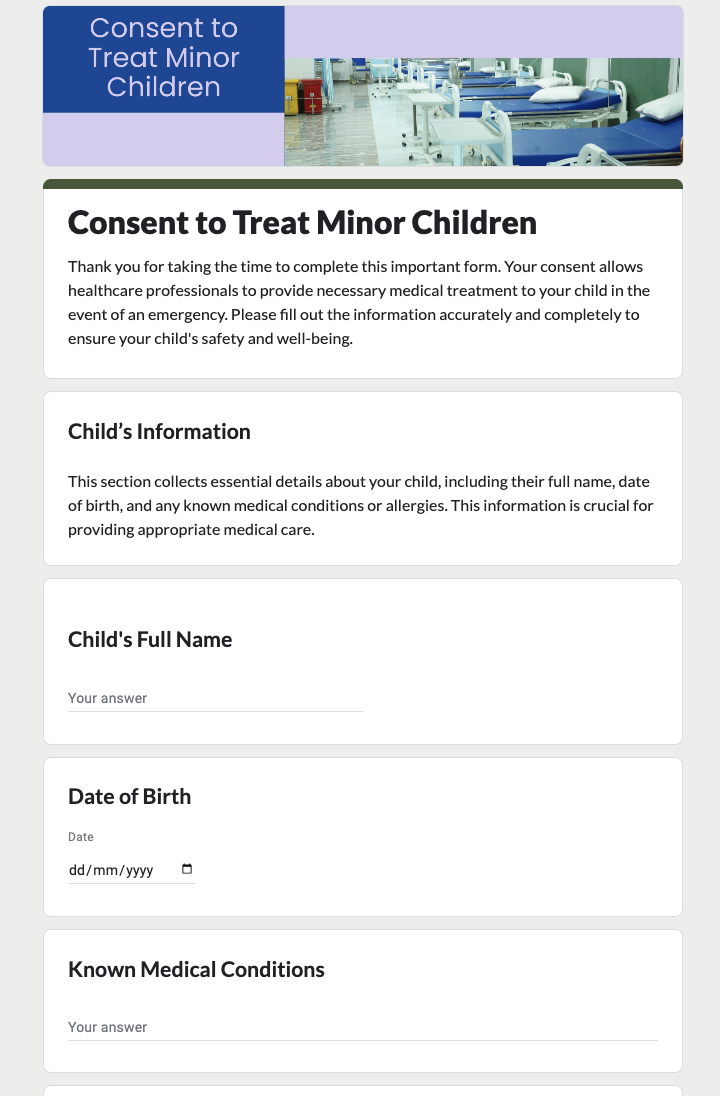Consent to Treat Minor Children
FREE
The “Consent to Treat Minor Children” form offers numerous benefits to healthcare providers, enabling them to administer immediate and appropriate medical care without parental presence. This document ensures that medical professionals can respond swiftly and effectively in emergencies, enhancing the overall safety and health outcomes for children under their care. By having this consent, healthcare providers are legally protected and can make crucial decisions confidently, ensuring that every child receives the best possible care at the right moment. Utilize this form to streamline medical processes and uphold your commitment to providing timely and effective healthcare to minors.




